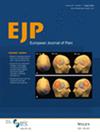A Significant Decline in the Number of Newly Dispensed Analgesics During the First COVID-19 Lockdown in The Netherlands
Abstract
Background
The COVID-19 pandemic disrupted healthcare systems worldwide, including the postponement of non-urgent care and reallocation of resources toward COVID-19 patients. The aim of this study was to assess the impact of the first Dutch COVID-19 lockdown on the initiation of new analgesic prescriptions.
Methods
This study analysed dispensing data from 1890 Dutch pharmacies, covering approximately 96% of the population (5.46 million patients). The number of first-time prescription analgesics dispensed (ATC2 N02 class, e.g., opioids, anilides) was compared between the first halves of 2019 and 2020. First-time users were defined as patients who had not received the drug in the preceding year. Data were stratified by age group (children, adolescents, adults, elderly), sex and time periods: weeks 1–11 (pre-lockdown 2020), 12–19 (lockdown) and 20–26 (post-lockdown).
Results
The total number of first-time dispensed analgesic drugs was significantly lower in 2020 (367,094) than in 2019 (388,973, p = 0.021), with a notable reduction occurring during the lockdown period (p = 0.003). Significant declines in first-time dispensed analgesic drugs were observed among adolescents and adults during lockdown (p < 0.001), particularly among females. In contrast, no significant changes were found among children and the elderly. The number of first-time dispensed analgesic drugs during the pre- and post-lockdown periods was comparable between the 2 years.
Conclusion
Delayed healthcare during the lockdown was associated with a decrease in first-time dispensed analgesic drugs, especially among adolescents and adults. This may indicate untreated pain or increased reliance on over-the-counter alternatives during this period.
Significance Statement
This Nationwide Dutch study showed a significant decline in first-time dispensed analgesic drugs during the first lockdown period of the COVID-19 pandemic, especially among adolescents and adults. This may indicate untreated pain due to delayed healthcare or an increased reliance on over-the-counter alternatives during this period.


 求助内容:
求助内容: 应助结果提醒方式:
应助结果提醒方式:


